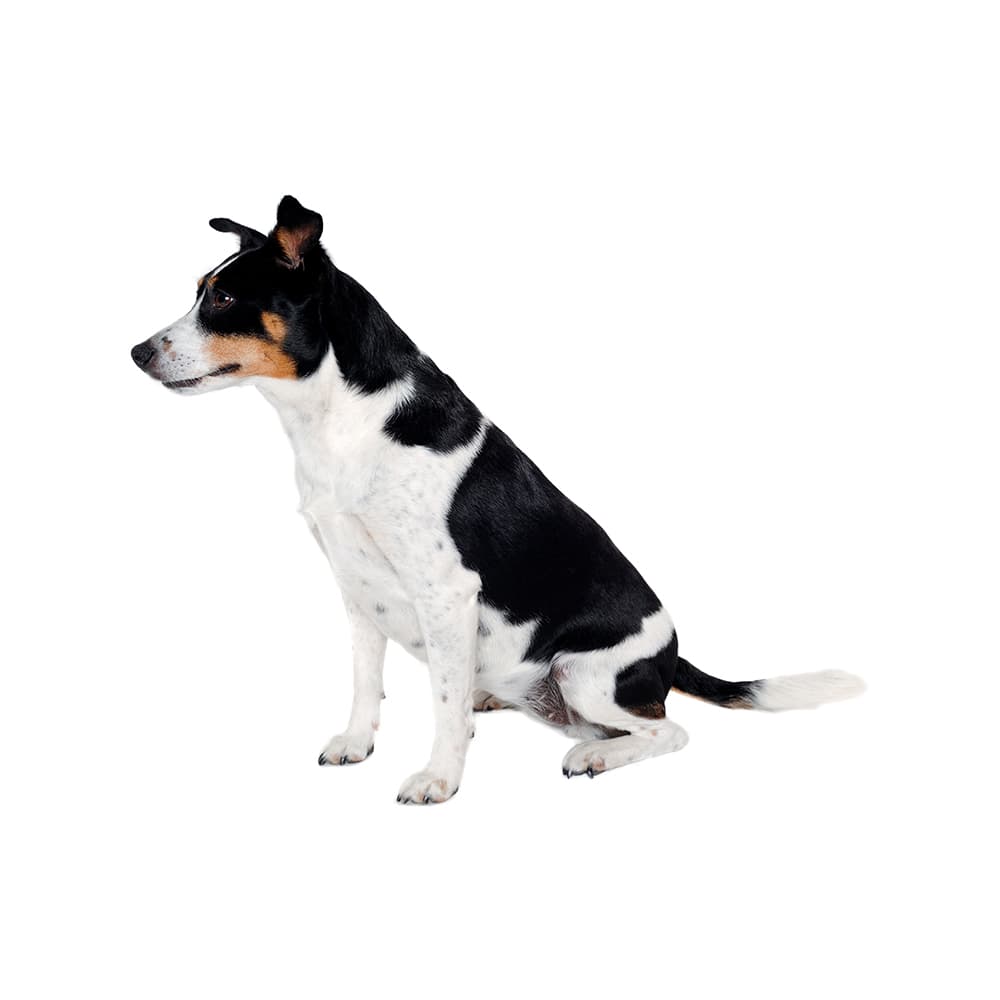Discover your dog's connection to this breed and 200+ others


Discover your dog's connection to this breed and 200+ others



Rat Terriers are an American breed with a rich history. Their origins trace back to the 18th and 19th centuries when farmers across the United States needed a versatile farm dog and effective vermin hunter. The breed was created through a mix of various dogs, including the Smooth Fox Terrier, the Manchester Terrier, the Bull Terrier, the Old English White Terrier, and the now-extinct English Black and Tan Terrier. Some strains of the Rat Terrier also have Whippet, Italian Greyhound, or Beagle blood, contributing to their speed and scenting ability, respectively. This breed got its name from their primary function - ratting. They were particularly favored by farmers for their efficiency in exterminating rats and other pests.
Rat Terriers can suffer from eye conditions, including primary lens luxation and progressive retinal atrophy (prcd). They can also be affected by demodicosis, hypothyroidism (congenital) with goiter, epilepsy, Legg-Calve-Perthes disease, color dilution alopecia, and dental issues. Genetic testing is recommended, including for the following additional conditions: hyperuricosoria, degenerative myelopathy, chondrodystrophy and chondrodysplasia, and progressive rod-cone degeneration.
Rat Terriers are intelligent, alert, and loving dogs that are known for their lively and feisty nature. They are extremely versatile, being equally adept at hunting and farm work as they are at being companion animals. Rat Terriers are known for their loyalty and protective nature, making them excellent watchdogs.
They are generally good with children and can get along well with other dogs and cats, especially if raised with them. However, their strong prey drive means small pets like rodents or birds may be seen as prey. Training from an early age and socialization can help manage this instinct.
A canine genetic lineage is a group of individuals or entire breeds that descended from common ancestors predating modern breed formation. Often these lineages are associated with a ‘type’ of dog with a unique historical working role and associated behaviors (e.g., herding, scent hunting, etc.).
Terriers were bred to hunt pests like rats, foxes, and badgers. Terriers are tenacious and fearless with high energy levels, strong prey drive, and feisty temperaments which all help in their hunting abilities. Terriers were used as mighty hunters in both urban and rural settings. Terriers have natural hunting instincts and protective tendencies.
Example breeds with ancestry from this lineage include Jack Russell Terrier, Scottish Terrier, and Yorkshire Terrier.
The Rat Terrier was named by President Theodore Roosevelt. His own Rat Terrier, named Skip, helped rid the White House of a rat problem.
Rat Terriers are excellent jumpers, able to leap more than five times their own height.
Some Rat Terriers have a unique trait called the "Rattie Tattie," where the dog will bounce on its front legs while keeping its back legs on the ground.
https://vgl.ucdavis.edu/breed/rat-terrier?page=1
https://www.akc.org/dog-breeds/rat-terrier/
https://www.ukcdogs.com/rat-terrier
Recommended by top vets with decades of experience
21 breeds
64 genetic health markers
50 genetic trait markers
